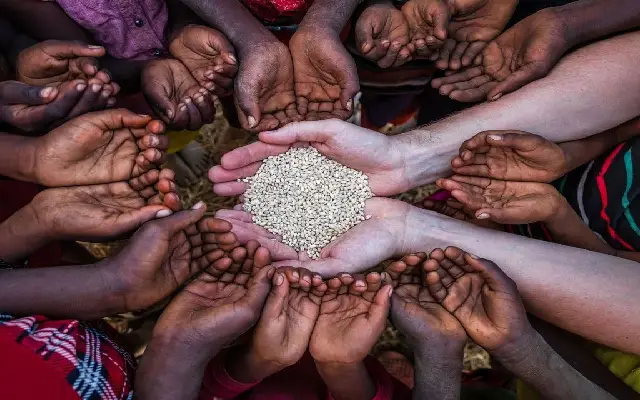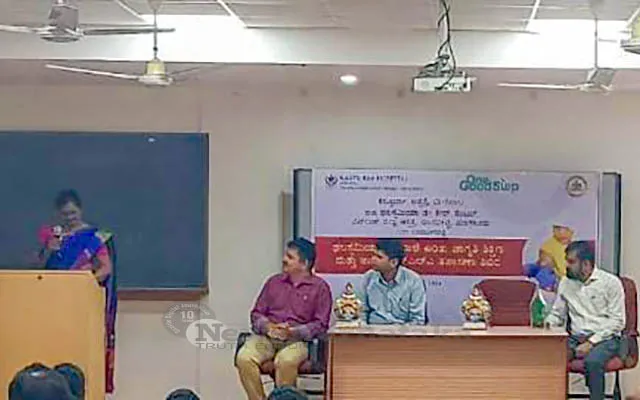‘Pili Vesha’, which etymologically means dressing up like tigers of ‘Pili Nalike’, which means Tiger dance is practiced in Tulunadu (coastal belt of Karnataka) and Kerala. This dance form is an ode to Goddess Durga and her Vahana, the tiger. Scores of men, who have vowed to play the pili vesha on fulfillment of their prayers, take to dressing up like tigers and dancing in teams, going door to door for nine days. These teams dance on the courtyards of the houses and collect the money offered to them in return. It is truly a lavish spectacle to witness the tigers dance, specifically in the glazing light of alantern, which unfortunately has now become a rare sight. The Origin
The Origin
Legends have it that the art form of ‘pili vesha’ or ‘pili nalike’ had started in the pious land of Mangalore itself. As per one belief, a dejected couple who had a disabled child had vowed to Goddess Mangaladevi seeking her benevolence. They had vowed to dress the child up like tiger and have him collecting alms for nine days of Navarathri, if his disability was reversed. It is believed that before the couple could even complete one circumambulation of Mangaladevi Temple, the boy was healed miraculously and hence the tradition.
Since then, every year, thousands of people have been resorting to painting their bodies in yellow and black stripes as completion of vow or simply out of love for the Supreme Mother. While many dress up fancily as lions, bears, hunters etc, the first respect during the Navaratri is to the tigers!
However, with all the fun, gaiety and frolic around the dance, it is surely not a child’s game. It takes whole lot of stamina, practice and perseverance to become a good, eye-catchy ‘Pili’.Speaking to Karnataka Today, B Yajneshwar, the man behind the renowned and celebrated troupe ‘Barke Friends’ says, Pili Nalike is a divine art by itself. Barke Friends have been staging Pili Nalike over the last 24 years and they enjoy a coveted place in the region. With over 100 members in the team, the tigers from Barke are said to be jaw-droppers and head-turners!
B Yajneshwar, fondly called Yaddu, says that discipline is the mantra to make a handsome pili. Traditionally, he says, the ones wanting to paint their bodies during the Navarathri had to maintain discipline over the nine days. The ‘Shuddachara’ (discipline) includes cleansing of thought and body through balanced vegetarian diet and righteous acts. However, not many follow this anymore.
“Practically though, the art form was in the olden days, developed in the local ‘vyayamashale’ or the gyms because those days a lot of attention was paid to the physique of the dancers,” he says adding that some of the big names in this art form were not less than any super stars those days and people even waited till mid night to see the heroes get to doing what they were best at. Their carved muscles shined like tiger pelts under lantern lights and they ceased to be humans when they danced. “That beauty is not to be seen today, but I am glad Pili Nalike is still existing and I see a great sense of craze among youth to take it forward,” he says adding that as against the handmade concoction of turmeric and some really harsh materials, which literally burnt the body on being applied, today the dancers endure equally difficult substance- the chemical paints and emulsions.
He says that during the olden days, the preparation for nine-days of Navarathri too was something worth documenting. Young men who were trained in the gyms were then given dance training. There are basic five steps or to be precise five beats of percussion, from which entire pili nalike develops. These steps were taught to perfection before teaching techniques of somersaults on sand grounds, which helps dancers in staging stunts of lifting currency notes kept on ground among others.
The highlight of the dance was a part called ‘KuriHakunu’, that is to kill a sheep, wherein an alive sheep was lifted by one individual with his mouth, with hands tied back. The lifted sheep was then flung in the air. However, this practice was stopped citing cruelty on animals and tiger troupes have humbly obliged, replacing the animal with ‘Ari Mudi’ or paddy stack.
The attire
The attire and make up of the tiger dancers truly makes them what they want to become. While there are expert hands that paint these dancers, there are four styles of paint followed traditionally- Patte (stripes), ‘Chitte’ (three dotted), ‘Cheetah (single dot) and ‘Black tiger’. The black tiger is considered the most ferocious of them all.
The dancers don a mask of a tiger or a cap with fury patch on the ears. There are experts who make these caps every year for the troupes. The caps are traditionally made of paper Mache, but off late there are teams which make use of fibre caps as well. The dress is completed with a velvet knicker, embellished with flashy girdle or belt and a tail.
Recent trends
Though initially, the percussion were mainly the ‘Chende’ or ‘Thase’ playing traditional tunes today Bollywood and Kannada film songs have taken over. But, the fusion between the traditional beats with the filmy beats is commendable.
Though, there was a time when the pili nalike was meant exclusively for men, of late there are all-women teams who have entered the arena fearlessly, brushing aside a lot of criticism. Acrobatics and stunts have also become an integral part of the show wherein dancers stage precarious somersaults, jumps, rope walk etc.
When fear of disintegration of this art form stealthily creeped in, a young leader took the onus of organizing a show that could become a platform for the tiger dancers to showcase their talent.
Thus came into existence an event named ‘Pili Nalike’, which scripted history in itself.
Brain-child of upcoming political leader Mithun Rai, the event has seen just two editions, but its popularity has spread far and wide and the attempt has been appreciated by everyone. Hundreds of troupes come on stage to put up an excellent show, capsuling various aspects of the art form in just a few minutes. The show is going strong and steady.
What the future has in store for the tigers of Dasara, only time will tell.
(This article was published in the recent issue of Karnataka Today Magazine)



















